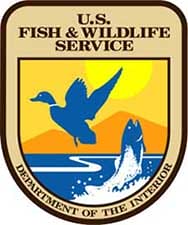Maine to provide habitat in 22,000-acre lynx management area


Washington, DC -(Ammoland.com)- With measures in place to minimize and offset the effects to federally protected Canada lynx, the U.S. Fish and Wildlife Service has permitted the Maine Department of Inland Fisheries and Wildlife for incidental captures of the threatened species associated with state-regulated trapping programs.
“People can continue to enjoy one of Maine’s long traditions, furbearer trapping, while taking steps to avoid harming Canada lynx and supporting a larger effort to provide habitat that helps us recover the species,” said Assistant Regional Director Paul Phifer of the U.S Fish and Wildlife Service Northeast Region. “This illustrates how the Endangered Species Act allows for some flexibility when applicants have demonstrated that they have minimized and mitigated the effects on protected wildlife.”
Maine is the first state to have an incidental take plan for Canada lynx. The MDIFW’s final incidental take plan, required for the incidental take permit, outlines the minimization measures, such as using certain trap sets and increasing trapper outreach, compliance monitoring by wardens, and veterinary oversight. The take of lynx will be offset by providing lynx habitat in a 22,046-acre lynx management area on the state’s Bureau of Parks and Lands Seboomook Unit in northern Maine.
“Working together, we have reached an agreement that continues to safeguard Maine’s lynx population, while allowing the State of Maine to move forward with our wildlife management programs,” said Director James Connolly of the Bureau of Resource Management, Maine Department of Inland Fisheries and Wildlife. “This plan is an excellent example of how agencies can work together to achieve shared goals.”
The Service previously released versions of the MDIFW’s incidental take plan and the Service’s environmental assessments for public comment in November 2011 and August 2014. The Service conducted three information sessions and received over 12,900 individual comments, which can be viewed at regulations.gov (docket FWS-R5-ES-2014-0020). Responses to the many issues raised in public comments are contained in an appendix to the final environmental assessment, which is available here.
“Our analysis through the permitting process confirmed that trapping does not pose a significant threat to Maine’s lynx population,” Phifer said. “The most important factor to maintaining a healthy population of lynx in Maine is having sufficient habitat, which is why the plan focuses on managing habitat for mitigation.”
The Endangered Species Act makes it illegal to “take”—meaning trap, capture, collect, harass, harm, wound or kill—federally threatened or endangered wildlife, such as the threatened Canada lynx. Trapping for common species like coyote, fox, pine marten or fisher, have the risk of incidentally taking Canada lynx. An incidental take permit allows trapping to continue in compliance with the ESA as part of the recreational fur trapping program, predator management program (coyote control) and animal damage control program, as the MDIFW undertakes practicable measures to minimize and mitigate take of lynx.
Incidental take plans, known also as habitat conservation plans, identify the impacts to listed species from a project or program; the steps the applicant will take to minimize and mitigate for such impacts; what alternative actions were considered; and how conservation efforts will be funded.
To learn more:
- Visit the Maine Field Office website, http://www.fws.gov/
mainefieldoffice/ , for final permitting documents, questions and answers about the process, species information, and an archive of the draft and revised documents. All documents are available on the Canada lynx page: http://www.fws.gov/mainefieldoffice/canada_lynx. .html - Visit www.regulations.gov and enter docket FWS-R5-ES-2014-0020 to review comments submitted during the comment periods, the Service’s response to comments, and the revised plan and assessment.
About the U.S. Fish and Wildlife Service
The mission of the U.S. Fish and Wildlife Service is working with others to conserve, protect, and enhance fish, wildlife, plants, and their habitats for the continuing benefit of the American people. We are both a leader and trusted partner in fish and wildlife conservation, known for our scientific excellence, stewardship of lands and natural resources, dedicated professionals, and commitment to public service.
